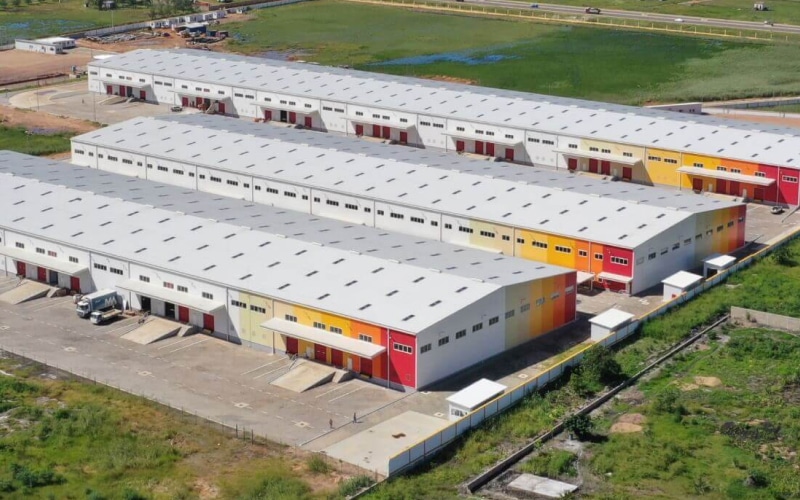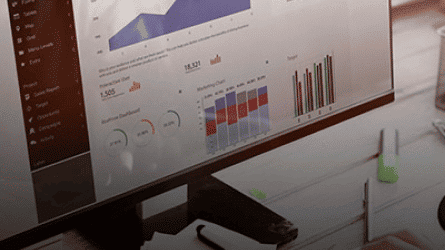In recent years, large global companies have come to understand the need to innovate and evolve more rapidly to stay competitive and relevant. That recognition gave rise to the corporate ecosystem, an ever shifting collection of partnerships, alliances and collaborations that expose companies to fresh ideas, minimize their cost of trying new things, and let them learn by doing.
Ecosystems for small and medium-sized companies (SMEs) have been slower to take shape. Now they’re finally coming into view.
Strategist James F. Moore first noted the parallels between the natural world – where living organisms interact with one another and with elements in their environment – and what was taking place in the business world at the dawn of the Internet Age.
Moore wrote in the Harvard Business Review in 1993 that by joining a business ecosystem, companies could “co-evolve” and innovate together. “Successful businesses are those that evolve rapidly and effectively. Yet innovative businesses can’t evolve in a vacuum. They must attract resources of all sorts, drawing in capital, partners, suppliers, and customers to create cooperative networks.”
Business leaders today accept the importance of the ecosystem as a means of creating future value. In a 2017 study by Accenture, more than 97% of major companies said future business models would be created within ecosystems.
Smaller businesses need their own ecosystems. They require products, services, partners and collaborators that speed their digital journey; help them enter new markets; allow them to deploy their data; and give them access to scale-building technology that sharpens their competitiveness.
Big businesses are relentless in their hunt for the small, tech-driven “unicorns” that can bring outsized value to their ecosystems. But until now they’ve had little interest in more prosaic SMEs as ecosystem collaborators, protégés or even customers. That’s been especially true in emerging markets.
In Africa, where SMEs provide 80% of jobs and represent 90% of all companies, the life cycle for most small businesses is tragically short. Bigger companies and governments are doing little to help them develop their own ecosystems or close what the London Stock Exchange group says is a $140 billion SME funding gap.
Venture Africa says: “Unfortunately, the hostile business ecosystems in many African countries don’t support the growth of SMEs, resulting in their rapid death.”
That is changing, albeit slowly. The SME ecosystem is at the heart of some notable new initiatives. The Monetary Authority of Singapore has formed Business sans Borders, a hybrid business data and solutions hub that will use artificial intelligence and other capabilities to aid in the digital transformation of SMEs. Mastercard, SAP and others are taking part in the project.
Kuwait’s $6.5 billion National Fund provides SME startup capital and steers young SMEs to private sector mentor-advisor companies that can stress-test their ideas and help them figure out what it takes to go to market.
Similarly, Saudi Arabia is knitting together a network of innovation centres, entrepreneurship platforms, incubators, accelerators and co-working spaces to foster SME creation and growth.
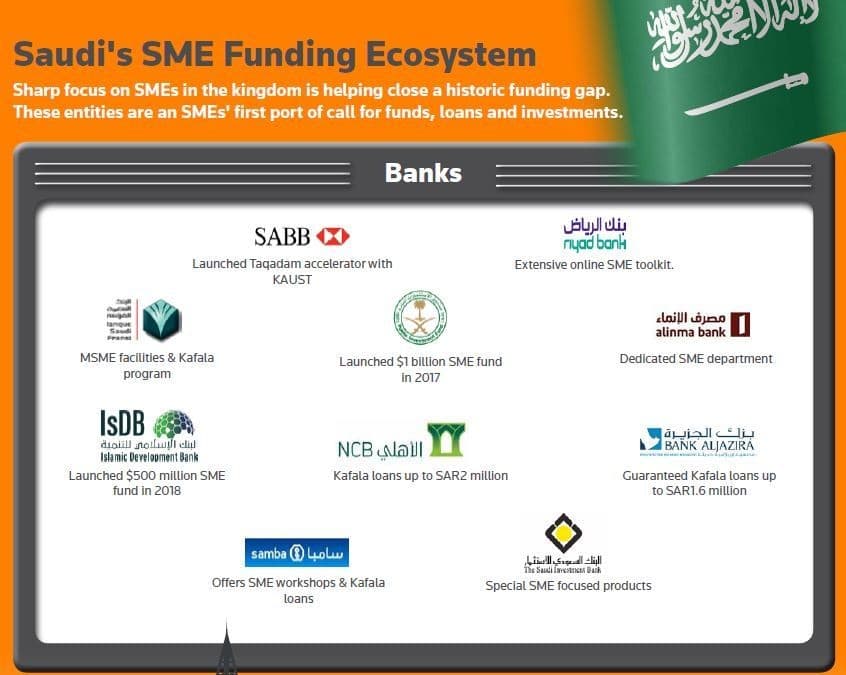
Officials in Pakistan recently identified SME growth and ecosystem support as the country’s top economic priority.
Elsewhere, Scale-Up Denmark is introducing Danish SMEs to larger corporates and prodding them to sell in global markets. And SheTrades, an initiative of the Geneva-based International Trade Centre, aims to connect 3 million female entrepreneurs and female-owned small businesses by 2021.
Even sophisticated, tech-driven SMEs have been hampered by lack of access to affordable data analysis. Hal Varian, chief economist at Google, says powerful number crunching and analysis are now available to SMEs through programmes such as R and Python, Google’s Kaggle, or easy-to-use machine learning algorithms offered by TensorFlow, Cafee and others.
Varian is credited with coining the term “micro-national” to describe the new breed of entrepreneurs and small businesses that have joined the competition for cross-border trade. Micro-nationals are proliferating as they discover online tools that give them buying power, capital, market access and local connections needed to export and do business outside their home markets. Eighty-six percent of SMEs in one survey felt technology was “levelling the playing field” for them to operate globally.
In India, small manufacturers can now use a cloud-based platform to analyze the efficiency of plant machinery and begin their digital transformation.
Lazada, Shipa, Kabbage, First Circle and others are building technology, logistics infrastructure and financing mechanisms designed for small business “e-tailers” and entrepreneur-led e-commerce.
Banks in New Zealand, Spain, Germany and Australia are offering SMEs services like those they market to big corporate customers: advisory services, financial management, strategic insights, and tools that help with forecasting.
Florian Semle wrote in Medium: “Ecosystems emerge through cooperation of a wide range of different players – startups, companies, platforms, services providers, consultants, research hubs and more, to solve common problems.”
He said building an ecosystem “is the way to create a structured framework out of the noise and complexity of digital transformation. It is a process of social acceleration, designed to overcome organizational limitations in speed, expertise, talent, technology and flexibility”.
At many big companies, the ecosystem is awkward, uncomfortable, hard to manage. It is a painful social and cultural stretch that requires large organizations to offer creative freedom, collaborate, and innovate within a network in ways that feel alien. Only a small minority of those surveyed in the Accenture study believed their company culture was ready for that kind of collaboration.
Ecosystems that connect large companies and SMEs are good for both. SMEs, in addition to bringing ideas and energy, come with a hunger that is often missing in big corporates, along with a tendency to question entrenched notions and accepted practices. SMEs help quicken the metabolic rate in lethargic ecosystem partners that are slow to spot and grab market opportunities.
And in emerging markets, SMEs can be the most valuable ecosystem partners. That’s because larger homegrown players – usually the most sought-after partners for global companies – are often overly concerned about guarding market share and too hesitant to share proprietary data to be of much value as ecosystem collaborators.
Most emerging markets have voracious appetites for new business models. They feature a furious rate of technology adoption. They offer pools of eager, young talent. All these elements are essential to successful, dynamic ecosystems – meaning ecosystems that generate value.
India, where internet penetration has yet to hit 30%, hints at the wildly vibrant ecosystems driving growth in social media platforms that were adapted to local tastes and habits with the help of thousands of SMEs.
India is already the world’s largest market for WhatsApp and Facebook; no. 3 for Instagram; and no. 4 for Twitter; home to four of Tinder’s top 10 cities for paying users; and the location of one in 10 Uber rides, according to research firm eMarketer.
So the next time you take a hard look at your ecosystem, see if you can spot the hole.
This article is part of the World Economic Forum Annual Meeting
Read the original article here: https://www.weforum.org/agenda/2019/01/smes-make-the-most-valuable-partners-heres-why/
How technology is providing a VIP shopping experience for all Q&A with Nadia Akil, CEO of UPAC
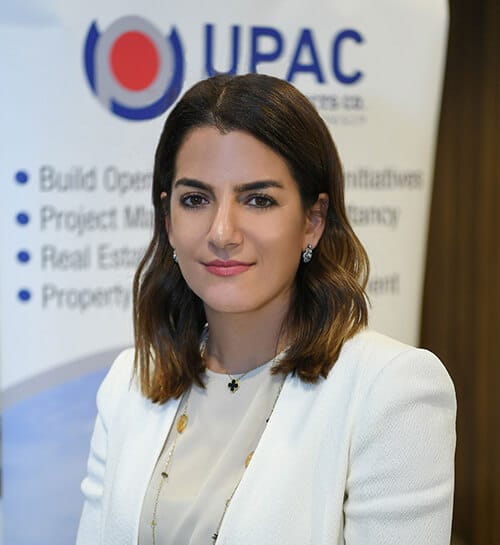
E-commerce is disrupting the retail sector. Its growth potential is huge in the GCC, as e-commerce has been slower to gain a foothold here compared to more mature markets. The market is expected to double to $20 billion by 2020.
So what does this mean for brick-and-mortar retail? Malls are a crucial part of the region’s culture. Will a shift to online buying spell trouble for them? Not likely. In fact, some of the same digital innovation driving the change in consumer buying habits is also transforming shopping malls in the Middle East. It’s time to get ready for the super-sized smart mall.
To find out more, we spoke with Nadia Akil, CEO of UPAC, an Agility affiliate and leading investor in Reem Mall, a $1.2 billion retail leisure, dining and entertainment destination set to open in Abu Dhabi in 2020.
What is your take on the changing retail landscape in the Middle East?
It is drastically different from ten years ago. The rise of e-commerce is a huge challenge for retailers. Although its uptake has not been as rapid as in the U.S. or U.K. — e-commerce still counts for just 2% of retail sales in the Middle East — that’s only going to increase. We’re living in a digital world, and brick-and-mortar retailers must embrace this if they’re to survive. I’m not just talking about having an online presence. Retailers need to move to a smart model where the physical act of shopping is combined with a digital experience. As a retailer, you need to look at the customer journey and use technology to improve it and, most importantly, make it personal to them.
How can retailers use technology to improve the customer experience?
Augmented Reality (AR) is a great example of how technology can improve the customer in-store experience. Sometimes when browsing clothes you want to see what they look like, but don’t want the hassle of actually trying them on. Shops can offer an AR experience through augmented dressing rooms, or via a smartphone app. AR is already a hit with consumers – according to a study by Interactions , 61% say they would prefer to shop at a store that offered AR over those that don’t.
If shoppers enjoy trying items on but want a better experience, smart mirrors are the answer . Interactive fitting rooms kitted out with “magic” mirrors automatically recognise products through RFID tags. These are synched with store inventories, so if a customer wants a different size or style they can request it. The mirror image can also be captured on camera, allowing the shopper to easily seek a second opinion from friends via social media.
Robots aren’t being utilized past the self-checkout stage for now, but it’s only a matter of time before consumers can enjoy their own “personal shopper” robot in store.
And what about personalizing the customer journey?
Data and analytics play a key role here. Retailers who have an online offering can use this data to encourage their customers to visit the store through personalized promotions. Physical stores can also maximize on the point of sale, encouraging consumers to spend more by sending targeted offers to their mobile phones through digital signage, and based on what they’re trying on in the dressing room or have in their baskets.
Personalizing the customer journey will be crucial to the survival of physical stores because it’s everything from the customer’s perspective. Nearly all consumers (91%) are more likely to shop with brands that recognize and remember them, and that provide relevant offers and recommendations, according to a study by Accenture.
How else is technology transforming the process?
Retailers need to be able to rely on super-efficient supply chains. If they don’t have a product a customer wants in stock they need to be able to get it to them ASAP. Shoppers who want purchases delivered to their doors need retailers with super-fast delivery services.
In response to this need, technology is transforming the logistics sector and enabling it to operate at high-speed. Warehousing is more efficient thanks to big data, automation and robotics. The challenges of the last mile are being overcome by the gig economy and SMEs who collaborate with retailers to ensure last-mile delivery in under an hour.
What about the rise of the super-sized smart mall?
In the Middle East, the mall is so much more than a place to shop. Malls are a key part of our culture, places you go to spend time with your friends and family. But to survive in the digital world they must embrace technology and use it to enhance the visitor experience.
In the smart mall, technology is everywhere. From the digital and interactive signage throughout to the tablet you order your lunch from in the food court. Malls can enhance the experience with apps that engage customers by letting them know about events at the mall, the latest offers and promotions in stores, and helping them locate services and find friends who are also visiting that day.
We’ve touched on AR, but VR (Virtual Reality) is also an exciting way for malls to offer immersive experiences to visitors. VR lets customers try out products in a way they couldn’t anywhere else, taking the retail experience to a new level. Say you’re buying an outfit for a special occasion, VR allows you to try it on and test it out “on location.” Buying new sports equipment? VR puts you on the tennis court or golf course, ready to swing your racket or club.
Smart malls can also overcome pain points for shoppers by offering parking assistance and delivering purchases to cars to free up shoppers throughout the day.
Finally, malls should be mindful of social media opportunities and integrate these into their design and layout. You need Instagram-friendly displays, and interactive features that users can synch with their social media accounts.
And what about “retail-tainment”?
Consumers want bigger and better experiences and this is where mega-malls come into their own. Their sheer size makes them destinations in their own right.
At Reem Mall in Abu Dhabi we will be offering a range of entertainment activities such as Snow Park Abu Dhabi, the region’s largest indoor snow park where visitors can enjoy sledding, luge runs and zorbing! In a mall! Now that’s an experience. Reem Mall will also be home to the award-winning VOX Cinemas, including the large format MAX screens, fine dining Theatre by Rhodes and the children focused VOX Kids. For the first time, VOX Cinemas will be fused with Magic Planet creating a unique leisure destination. In addition, Reem Mall will house a variety of around 100 food and beverage options ranging across fine dining, family style, casual dining, cafes, fast food, pâtisseries and coffee shops, all located throughout the mall.
Malls really are places where the family can spend a whole day together being entertained, and where friends can meet to relax and socialize. E-commerce can’t take away from that, but retailers can future-proof their businesses by embracing technology and offering customers an enhanced shopping experience as part of the visitor’s day out.
Thanks Nadia. It sounds like, ultimately, the customer will benefit most?
Absolutely. Disruptive technology is challenging the physical retail sector to up its game, and that’s a great thing. Through digital integration smart malls are offering a VIP shopping experience to all, which I for one will be embracing!
As the World Economic Forum comes to Ha Noi for this year’s ASEAN meeting, we’re reminded of how far Viet Nam has come since the country first hosted the gathering in 2010. Viet Nam experienced over 6% GDP growth last year, but it’s not the only country in the region with a remarkable growth story.
Indonesia, Thailand, Myanmar, the Philippines and Cambodia – countries that all followed in the footsteps of Viet Nam as first-time hosts of WEF’s annual Asian regional meeting – along with others in the ASEAN bloc, are experiencing strong growth too. The 10 member states are expected to generate GDP growth rates between 3% and 8% over 2017-2021.
While the growth of these individual countries is impressive, the real success story belongs to the region. ASEAN has long heeded the connectivity imperative, and the benefits of regional cooperation and economic integration, through initiatives such as the ASEAN Economic Community (AEC), are paying dividends. ASEAN commands a combined GDP of about $2.4 trillion, and GDP per capita has increased by 63.2% from 2007 to 2015. If it were a single country, it would be among the top 10 economic powers in the world. To further drive growth, ASEAN and its six strategic partners will come together in November for the hotly anticipated signing of the Regional Comprehensive Economic Partnership. This will create the world’s largest free-trade area, representing nearly 30% of global GDP, and demonstrates ASEAN’s commitment to removing barriers to trade and expanding market access both within the region and with its partners.
With a population of over 600 million, ASEAN is the world’s third-largest market. It also offers the third-largest labour force, behind China and India, and has some 67 million households that are part of the “consuming class”, a figure that could almost double to 125 million by 2025. Between 2007 and 2014, ASEAN trade increased by a value of nearly $1 trillion. While nearly a quarter (24%) of trade was within the region, this was followed by trade with China (14%), Europe (10%), Japan (9%) and the United States (8%). During the same period, foreign direct investment rose from $85 billion to $136 billion. As nations elsewhere redefine their approach to international trade, one thing’s for sure: ASEAN is open for global business.
Embracing the 4IR
While significant steps have been made to enhance the free flow of goods, services, investments and people, new challenges lie ahead. The technological advancements brought on by the Fourth Industrial Revolution (4IR) are placing new demands on governments and businesses across the region. However, the 4IR also presents great opportunity, if member states can respond to its challenges with speed, flexibility and agility in order to make these new technologies part of its success. Entrepreneurship could play a key role here. SMEs are the backbone of local economies across ASEAN, and often the largest source of local employment across all economic sectors. In countries such as Thailand and Viet Nam, for example, they account for nearly 99% of all registered businesses and employ more than 70% of the workforce. To unleash this potential, the region must ensure that policy reflects the interests of SMEs, affording them the best environment for growth.
E-commerce is a prime example of how 4IR technologies are disrupting traditional sectors. While e-commerce remains relatively underdeveloped in ASEAN today, accounting for less than 1% of total retail sales, this will soon change as internet penetration spreads and the region’s consumer base continues to grow. Given this potential, large local providers such as Lazada and Tokopedia are competing for market share with global players. With SMEs poised to play such a key role in the region’s success, it will be crucial for governments to ensure the internet infrastructure they require is in place, so that entrepreneurs can future-proof their businesses and actively participate in e-trade.
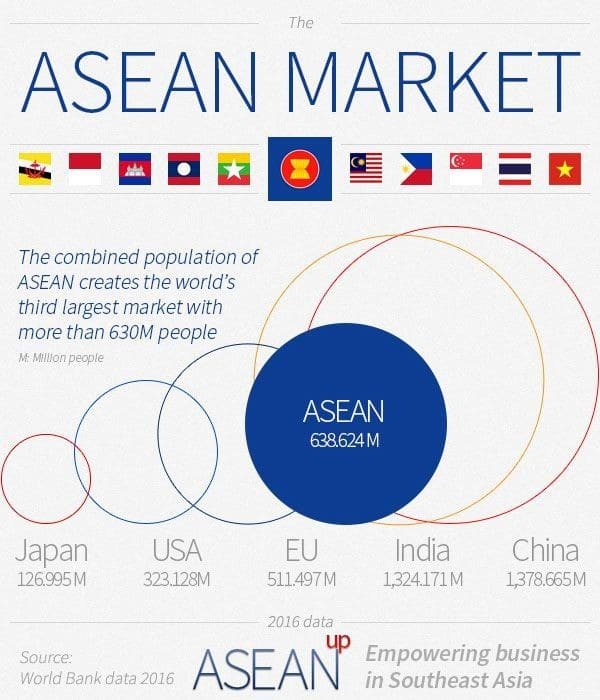
Image: ASEAN Up
4IR technologies are also enabling logistics providers to take supply chains to the next level in terms of speed and accessibility. This is contributing to the rise of e-commerce, but also driving business more broadly across the region. Drones are operating in warehouses, artificial intelligence is automating processes and blockchain has the potential to transform decentralised supply-chain functions. Logistics providers are also offering online freight forwarding platforms that ease the process of doing business for SMEs, both within the region and more globally. Unsurprisingly, global logistics hub Singapore is leading the way in adoption of technologies into the supply chain, through its Smart Logistics initiative.
Taking an agile approach
However, to truly ascend the global value chain, ASEAN needs to look beyond trade facilitation and advancements in technology. In reality, the very 4IR technologies that are driving growth are at the same time disrupting the region’s traditional strengths in low-end manufacturing in the form of automation, robotics and 3D printing.
Have you read?
- These Asian cities are best equipped for the future
- How to power a bright future for ASEAN
- The ‘ASEAN way’: what it is, how it must change for the future
Governments and businesses need agile approaches to upgrade education, R&D, lifelong learning and skills development. This will create the necessary conditions for ASEAN to better close income gaps, create employment, support SMEs, expand the pool of knowledge workers and – ultimately – to rise in global value chains. Therefore, preparing the capable and young workforce for new realities must happen with close coordination between industry, governments and civil society. These will complement the tremendous efforts leaders are already making in supporting cross-border trade and enhancing mobility.
While there is much for the region to consider as it sets its sights on ascending the global value chain, what is clear is that now is the time for ASEAN to shine. The theme of this year’s World Economic Forum summit, ASEAN 4.0: Entrepreneurship and the Fourth Industrial Revolution, could not be a more timely one.
Written by Sushant Palakurthi Rao, Head of Global Partnerships, Agility
This article was originally published by The ASEAN Post in collaboration with the World Economic Forum.
Read the full article here: https://www.weforum.org/agenda/2018/09/trade-entrepreneurship-and-the-future-of-asean
As environmental, social, labor and governance imperatives come into sharper focus, the business case (again) for putting sustainability at the core of a company’s strategy.
Growing evidence suggests that businesses everywhere are putting sustainability at the core of their strategic thinking, planning and operations after decades of disconnect between their stated objectives and actions.
Sustainability is finally being embedded into business activity. One reason is that corporate data and academic research have begun to show a return on sustainable initiatives and practices, particularly at companies willing to broaden their definition of Return on Investment and adopt longer time horizons.
Another reason is the growing clamor from a spectrum of stakeholders – consumers, B2B customers, insurers, institutional and individual investors, regulators, community leaders, watchdog groups, employees and job candidates – for companies to demonstrate that they are responsible actors.
The sustainability movement is maturing. Considerations about social and environmental impact are shaping nearly every facet of corporate activity – nowhere more than the supply chain.
“Customers used to think about things in isolation like greening a warehouse, measuring CO2, or getting more visibility into their suppliers,” says Mariam Al-Foudery, Agility Group Chief Marketing Officer, who oversees sustainability and corporate social responsibility.
“Now more customers are looking at the whole supply chain and identifying practices that are connected and mutually reinforcing, things that have impact across business units and operational locations over the long-term.”
In a 2017 survey by EcoVadis and the HEC Paris business school, 97 percent of procurement officers surveyed listed sustainability as one of their top five priorities. Seventy-five percent of responding companies said they were using sustainability and corporate social responsibility criteria when selecting new suppliers.
What is sustainability?
Sustainable businesses try to meet the needs of the present generation without compromising the ability of future generations to meet their needs. They focus on good treatment of employees, impact on the environment, impact on local communities, and business relationships with suppliers and customers.
“Sustainable procurement is no longer a nice-to-have – it’s an integral business function responsible for protecting and improving brand reputation, driving revenue and mitigating business risk,” says Pierre-Francois Thaler, co-CEO of EcoVadis, an independent group that provides business sustainability ratings and analysis.
Not everyone is as enthusiastic
Yossi Sheffi, director of the MIT Center for Transportation & Logistics, says sustainability advocates have succeeded in framing the issue as one of “profits versus planet” or “societal good versus corporate evil.” He says that narrative ignores the role of businesses and their supply chains to provide jobs and deliver improved living standards. Sheffi argues that there is a difficult balance to strike and that the real friction is between those demanding environmental stewardship and people who seek jobs and affordable goods.
“Companies are championing their environmental credentials in glossy reports, speeches and media interviews,” Sheffi writes. “At the same time, however, many will admit, off the record, either that they do not believe in the need for this effort, or more commonly, that current initiatives do not meet any reasonable cost-benefit test even if global warming is real and the danger acute.”
Better processes
Others insist there is mounting evidence that sustainability adds real value.
“Embedded sustainability efforts clearly result in a positive impact on business performance,” according to a Harvard Business Review article co-authored by Tensie Whelan, director of the Center for Sustainable Business at New York University’s Stern School of Business. (See Q&A on page 10).
Whelan and her co-authors argue that sustainability delivers significant cost savings from increased operational efficiency and that it drives companies to innovate by creating better processes, new products and equipment, and improved working conditions.
When sustainability is part of corporate DNA, it can “engender enthusiasm from employees, customers, suppliers, communities and investors,” the HBR authors conclude.
The Sustainable Business Council says there is ample research to show that sustainability lowers the cost of capital, results in better operational performance, and has a positive effect on stock price. Sustainability is a major factor in building and protecting corporate value, the SBC says. Consulting firm McKinsey has estimated that the value at stake from sustainability concerns is as high as 70% of earnings before interest, taxes, depreciation and amortization.
“Forty years ago, the bulk of a company’s value linked directly to its tangible assets,” the SBC says. “Now only about a fifth relates to a company’s financial performance and physical assets. The rest reflects intangible assets like brand, intellectual property, and whether a business has a social license to operate.”
When sustainability is part of corporate DNA, it can “engender enthusiasm from employees, customers, suppliers, communities and investors.”
BY 2035: THE CHANGING ENERGY PICTURE
- Fossil-fueled cars will require 40 percent less fuel to go one mile.
- Energy intensity – the amount of energy required to produce a unit of GDP – will be half what it was in 2013. (Traffic congestion can cost as much as four percent of a country’s GDP.)
- Demand for electricity will grow twice as fast as energy demand for transport.
- Seventy-seven percent of new electrical capacity will come from wind and solar; 13 percent from hydro. (Installed cost of solar has fallen by 70 percent since 2009.)
- The population will have grown by 1.5 billion.
Source: McKinsey Sustainability & Resources Productivity
Agility innovation
Like its customers, Agility is taking aggressive steps to get greener. It is working with carriers to slash CO2 emissions, rethinking warehouse construction and management, piloting use of solar energy in building cooling, and investing in energy-recapture technology for trucks.
Mindful of its social impact, Agility pioneered protections and standards for workers in the Middle East more than a decade ago and has been a leader in sharing best practices and publicly advocating for stronger protections. In 2017, Agility introduced its first stakeholder policy, laying out goals and commitments to protect the environment, safeguard workers rights, improve communities where it operates, and be responsive to the needs and concerns of a variety of different interests.
“The biggest challenge for us and most logistics providers is on the customer side,” Al-Foudery says. “Customers want strategies, tools and technology to help them meet their sustainability goals.” One such tool gives Agility customers the ability to compare and optimize the environmental impact and cost of individual shipments using a nearly infinite variety of shipment types, routes, load sizes and configurations, and other factors.
Zero-impact target
A leading apparel powerhouse approached Agility with the goal of building sustainability into the design and manufacturer of its vast, globally sourced product line. Agility worked with the customer to create an information and standards framework and to build measurement and performance targets into its supply chain.
The apparel customer’s objective is a low/zero-impact, closed-loop supply chain: dramatic cuts in CO2 emissions and energy per unit of manufacture; facilities running 100 percent on renewable energy; 0 percent waste; doubling of supply chain efficiency every 18 months to two years.
“That can be scary, but customers with big, ambitious goals are sometimes the easiest to work with because they’re totally committed. They will take risks in order to become leaders,” Al-Foudery says. “They’re ready to innovate and break from established practices and willing to reward partners who help them achieve their goals.”
Sustainability efforts by consumer products companies and retailers typically get more visibility than those of B2B companies.
Alarmed by oceanic pollution, Nestle, Procter & Gamble, Coca-Cola and Unilever are among those searching for alternatives to plastics from fossil fuel polymers.
Supply chain priority
“The typical consumer company’s supply chain creates far greater social and environmental costs than its own operations, accounting for more than 80 percent of greenhouse-gas emissions and more than 90 percent of the impact on air, land, water, biodiversity, and geological resources,” McKinsey says. “Most of the environmental impact associated with the consumer sector is embedded in supply chains.”
Ethical Corp. estimates that there are about 400 sustainability labels, including Fairtrade, which got its start in 1992 but is being overtaken by alternatives. Sainsbury’s, the UK supermarket chain, is among those that have shifted from the third-party Fairtrade certification, creating its own “Fairly Traded” label.
Unilever and Nike are recognized leaders on environmental and social initiatives. Campbell Soup works with farmers to optimize fertilizer use and improve soil conservation. Walmart gives suppliers incentives for their sustainability performance. Alarmed by oceanic pollution, Nestle, Procter & Gamble, Coca-Cola and Unilever are among those searching for alternatives to plastics from fossil fuel polymers. Target, Keurig and others are pushing suppliers of industrial plastic items such as crates and trash bins to use more “post-consumer” material.
Worker rights
The safeguarding of worker rights and improvement in working conditions is often the most difficult issue on the sustainability agenda.
Five years after the Rana Plaza factory collapse that killed 1,100 garment industry workers in Bangladesh, independent assessments report improvement in factory safety and monitoring by the government and local companies. But two organizations representing western brands and retailers recently said local authorities still aren’t prepared to assume responsibility for policing safety standards.
Worker rights can be a contentious issue even for global leaders such as Nike, which developed many of the best practices now used by apparel brands and manufacturers. Nike has voiced objections to advocacy groups positioning themselves as third-party auditors, arguing that there is a conflict of interest for groups that are both campaigning and auditing. For their part, advocacy groups say many audits go too easy on brands and manufacturers.
But failure to tackle environmental and social risks can have punishing consequences. Apparel companies that contracted with Rana Plaza garment makers fell from lists of most-reputable companies in the aftermath of the tragedy. Aussie GrainCorp reported that drought cut its grain deliveries by 23 percent and led to a 64 percent drop in 2014 profits. Unilever estimated that it loses 300 million euros a year as worsening water scarcity and declining agricultural productivity contribute to higher food costs.
It is through experimentation and innovation, not spreadsheet projections, that viable sustainable business models emerge.
The business case for sustainability
Forum for the Future, an international sustainability nonprofit, says the companies set to benefit are those that can “capture the less tangible benefits as well as direct financial savings, for example, the clear reputational benefits of the initiative.”
The business-case numbers “are much ‘softer’ than decision-makers are used to,” the Forum says. As a result, “companies get stuck in a vicious cycle: they want a business case before giving permission to go-ahead with a project, but the information to build a business case can only be generated from the experience of going ahead.”
George Mason University professor Gregory Unruh says it’s time to look at the business case for sustainability a bit differently. “Multi-dimensional sustainability value is just hard to fit into a discounted cashflow analysis,” he writes.
Despite being hard to measure, Unruh writes, “investors are now realizing that sustainability performance feeds the long-term bottom line. And that’s causing managers to question traditional business thinking. So instead of spending time building a perfect business case, many are pursuing business model innovation experimentation, taking a page from Silicon Valley start-ups. It is through experimentation and innovation, not spreadsheet projections, that viable sustainable business models emerge.”
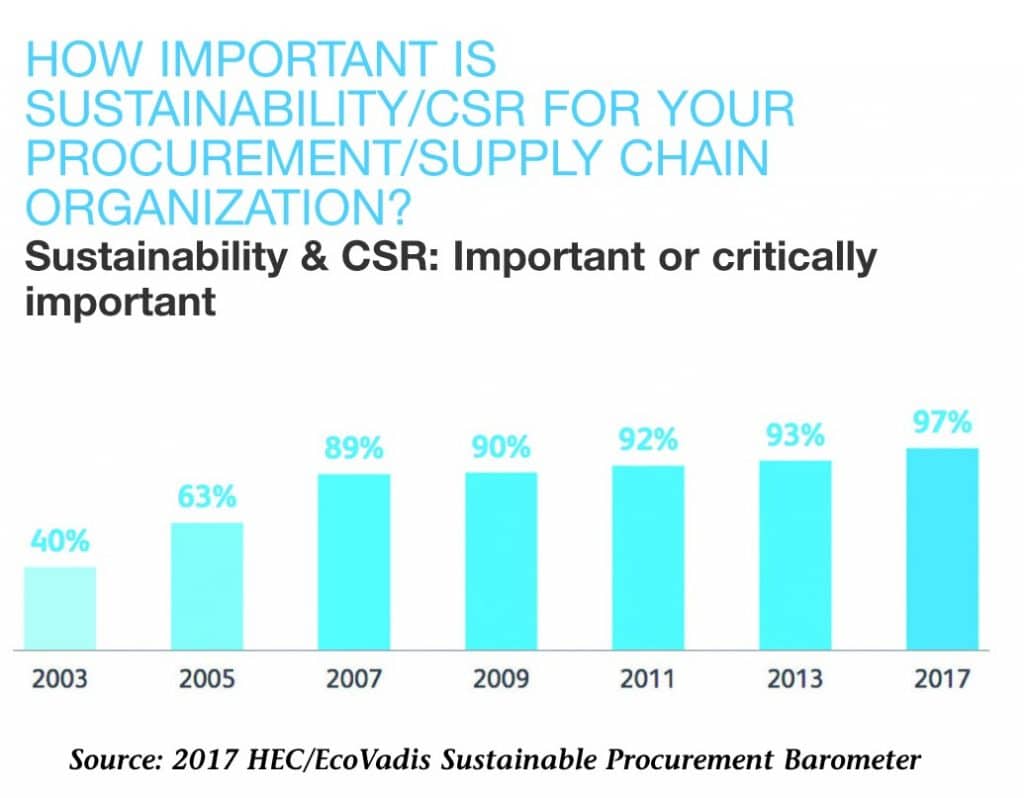
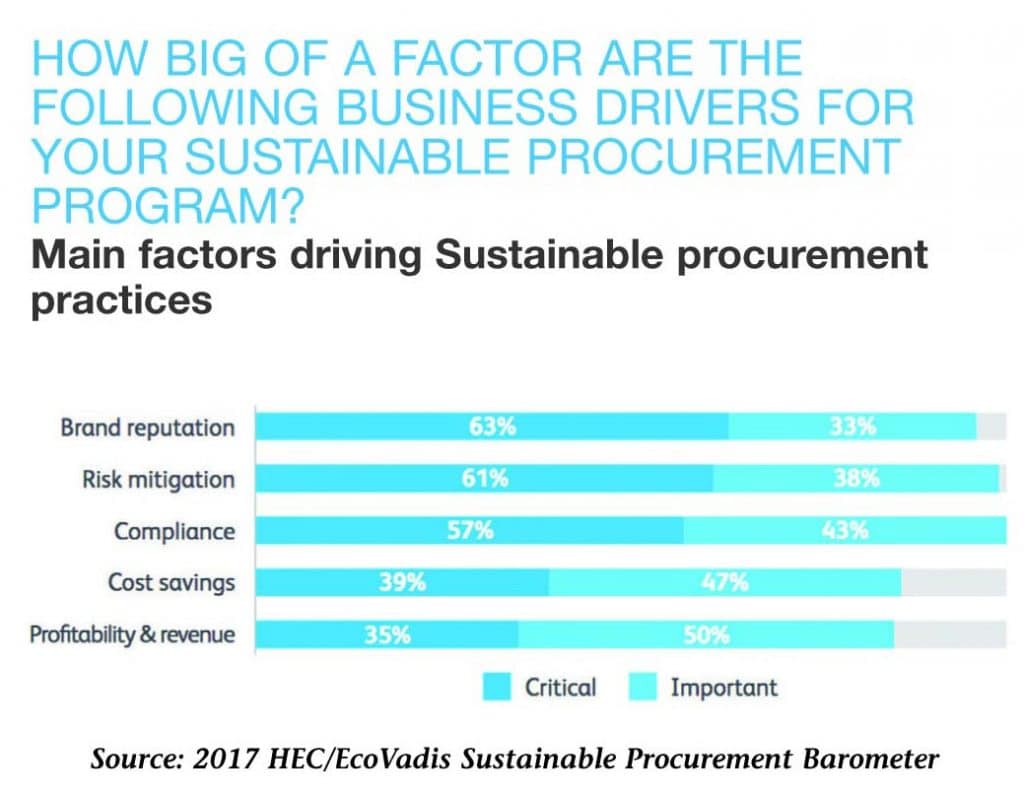
A look at the Gulf region where solar energy has been a tough sell in the face of cheap electricity subsidized by governments with abundant oil and natural gas.
Standard photo-voltaic solar systems have proved vulnerable to searing desert heat and frequent sandstorms. System installation costs have been too high, and paybacks too long and uncertain.
Today however, after a prolonged period of low oil and gas prices, Gulf countries are reducing or eliminating subsidies to consumers and commercial customers. Ambitious national economic diversification plans call for energy conservation and mandate cuts in consumption, along with blueprints for development of green communities and cities deriving most if not all of their energy needs from renewable sources.
Technology advance
The introduction of revolutionary new high-vacuum solar thermal systems – a robust and highly efficient means for generating thermal energy – is proving to be a game-changer. Solar thermal is ideal for the intense Gulf heat and one particular type of high-vacuum technology is capable of operating with minimal output losses even after severe sandstorms.
Air conditioning for Agility’s corporate headquarters in Sulaibiya, Kuwait is provided by a solar-driven cooling system that ran automatically and unattended for over 365 days with 98 percent reliability. In addition to delivering consistent and reliable energy output, the system, powered by a solar field manufactured by TVP Solar, SA of Switzerland, contributed 43 percent of the points necessary for the new building’s LEED Sliver certification. Highest output is achieved from 10am to 3pm each day in a climate where outside temperatures can reach 54 degrees centigrade (129°F), supplying 70 percent of the facility’s required cooling load.
Investment
Agility has invested in TVP Solar and is introducing the technology to commercial and industrial customers, says Steve Lubrano, CEO of Alternative Energy Solutions, an Agility affiliate.
Lubrano says the solar-thermal system and its components are relatively maintenance-free and are integrated into existing buildings. Despite blowing sand and dust, users need not worry about precision cleaning of panels because of their remarkable efficiency and ability to capture both direct and diffuse light.
The technology is becoming even more attractive as electricity costs rise and solar-thermal payback periods fall from a previous six to nine years to a more feasible three to five years.
Interest is expected to intensify as Gulf governments look to expand and “green” their energy production capabilities to ensure supplies for new industry and for energy-intensive uses such as water desalination.
“Oil-dependent countries have come to realize that if they’re burning it, they can’t sell it. That might not be a problem today, but it will be down the road,” Lubrano says. “So we’re seeing a sea change. Kuwait, UAE, Saudi Arabia and others have implemented energy mandates and have made plans for cities powered almost exclusively by renewable sources. We’ve gone from a lack of interest to, wow, ‘You mean you can provide energy and reduce electricity demand at the same time?’ ”
When implemented at scale, Lubrano says, “Yes, we can.”
Oil-dependent countries have come to realize that if they’re burning it, they can’t sell it. That might not be a problem today, but it will be down the road.
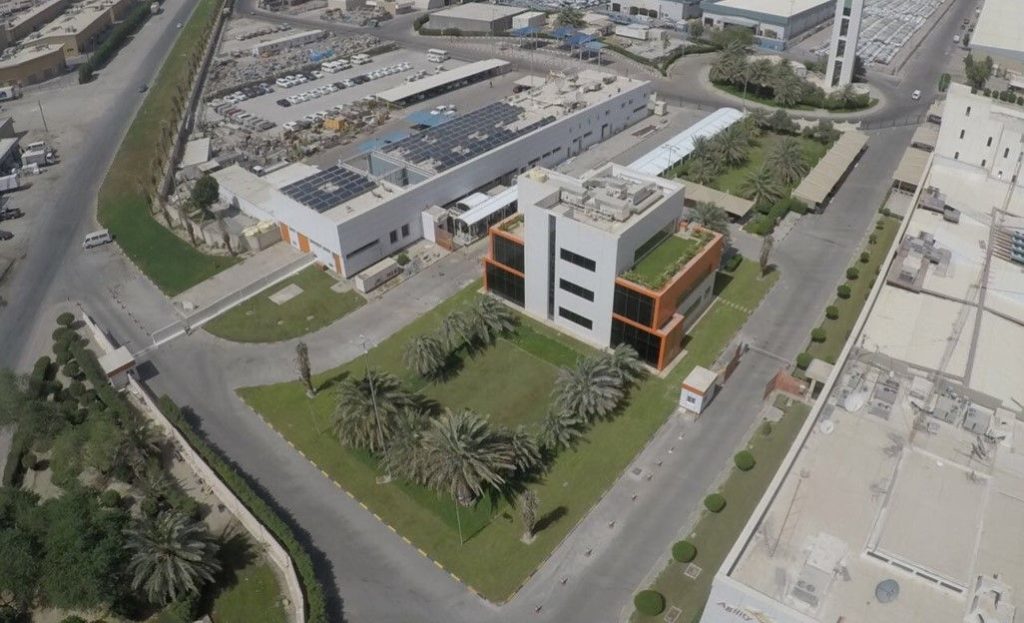

Best practices for sustainability in supply chain also mean tough questions for companies. Agility’s Mariam Al-Foudery lays out some key areas for consideration.
Best practices for sustainability are evolving as rapidly as any aspect of business, driven by new technology and an urgency for companies to demonstrate that they are effective environmental stewards and positive contributors to society.
Here are some key areas where logistics providers and their customers need to focus.
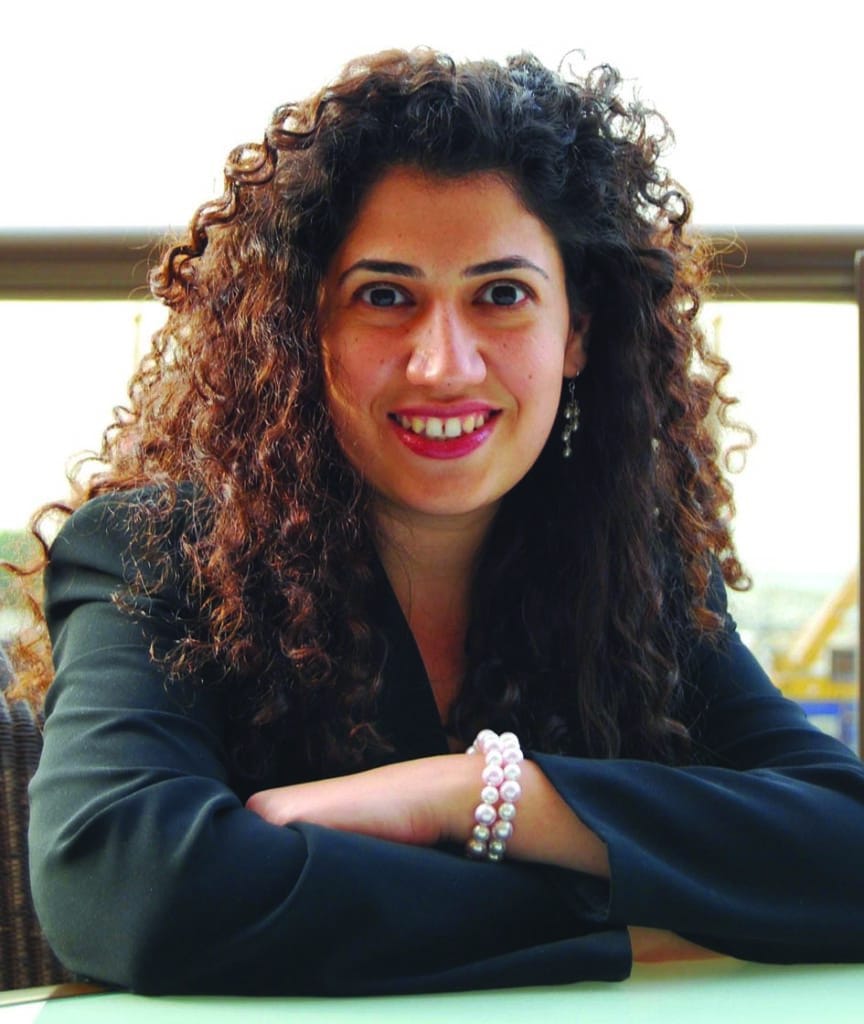
-
Traceability
Do you have upstream supplier visibility? Do you do supplier assessments and benchmarking? -
Labor
If migrant workers are in your employee mix, are you certain that they aren’t being exploited by labor brokers and unscrupulous recruiters, a problem that is particularly problematic for companies that hire from India, Nepal and East Africa?
Have you continued to focus on living and working conditions? Are you confident you have transparency into subcontractors? Have you created effective worker-grievance mechanisms? Are you educating and training workers on their rights? -
Energy
When you expand your truck fleet, are you adding CNG fueling stations and LNG vehicles? -
Packaging
If you are a consumer company, what about dimensional weight pricing? -
Warehousing
Have you looked at automation and cleantech in cargo handling and warehousing? -
Port selection
Are you routing shipments through “green terminals” that manage and contain possible pollutants and police for invasive species? -
Logistics digitization
Agility is among those using advanced algorithms to evaluate multiple scenarios and create optimal plans with the least environmental impact. Multi-echelon Inventory Optimization is another tool available. -
Data and measurement
Are you capturing, sharing and analyzing data with your logistics provider so you can get real-time feedback to optimize operations and make sure you are conserving, recycling, recovering and reusing as much as you can?
A sustainable vegetable garden in the arid demilitarized zone between Sudan and South Sudan brings relief to workers supporting the peacekeeping mission.
At the remote end of the supply chain, Agility’s GCC Services team of 105 expats and local staff supplies international peacekeepers with food and bottled water that is trucked hundreds of miles from the Port of Sudan to the mission in Abyei, Sudan.
Desperate for a quiet respite and something fresh to eat in a conflict zone, GCC personnel built a composting operation to turn kitchen waste into fertilizer and began bringing seeds back to Abyei when they returned from leave. The result is a lush, pesticide-free garden of herbs, vegetables and fruit.
The Abyei kitchen garden has yielded large quantities of nutritious beans, peas, jackfruit, guava, lemons, bananas, cassava, tomatoes, aubergines, cucumber, okra, watermelon, lettuce, coriander and other produce.
“This sounds like a small thing, but it’s not. Conditions in Abyei are austere, and the workdays are very long,” says Rashad Sinokrot, CEO of GCC Services. “The kitchen garden has created shade and greenery where there isn’t much of either. It’s been a stress reliever and teambuilder, and demonstrated that you can do something sustainable in a very harsh environment.”

The United Nations calls modern slavery – human trafficking, child labor and debt labor – the world’s second-largest criminal industry.
Efforts to monitor and crack down on modern slavery have forced companies worldwide to scrutinize their supply chains.
The most widely known attempt to mandate corporate transparency is the United Kingdom’s Modern Slavery Act of 2015. As a result of annual reporting by companies, the UK government estimates that at least 13,000 people are victims of forced labor, sexual exploitation or domestic servitude, Thomson Reuters reported recently. More than 5,000 potential victims were referred to UK authorities last year, a record number.
Worldwide, the Council on Foreign Relations estimates there are 40.3 million victims of enslaved labor and that one in four victims is a child. The Modern Slavery Act “has done a lot to raise awareness,” Kate Roberts, head of office at the Human Trafficking Foundation, told Thomson Reuters. “Unfortunately, in practice, we’re still waiting to really see many tangible outcomes from it yet.” The Business and Human Rights Resources Centre notes similar “lagging” efforts in FTSE 100 firms with operations in the UK.
How it works
-
Who reports:
Any organization that conducts business in the UK and has an annual profit of £36 million ($50.1 million) must issue a statement within six months of the financial year’s end detailing how it has audited the supply chain and operations for slavery risks and violations.
-
What to report:
There is no template for the report, but it should be concise, written in English, approved by the organization’s board of directors; signed by the director or equivalent, and published on the organization’s public website, linked to from the homepage. UK subsidiaries, UK branches and global organizations with a significant presence in the UK (including offices, assets, clients and trade relationships) are also beholden to this obligation, a Harvard Law School forum on corporate governance and financial regulation suggests.
-
How often to report:
Annually. Each year’s report should show improvement in corporate transparency – meaning that the organization’s workforce is being educated about modern slavery, policies are being created to prevent slavery or protect those who fall within a risk category (seasonal workers, unskilled laborers and those who work in potentially dangerous environments), and resources such as budget and staff are being allocated to address risks within the organization.
-
Failing to report:
The consequences include an injunction from courts to comply, and possibly a fine.
-
Accountability:
The Modern Slavery Registry (modernslaveryregistry.org) keeps track of all published reports across 27 sectors, ranging from capital goods and consumer services to pharmaceuticals. This website also measures organizations’ compliance with the Modern Slavery Act; as of April 2018, only 19 percent met all minimum requirements.
